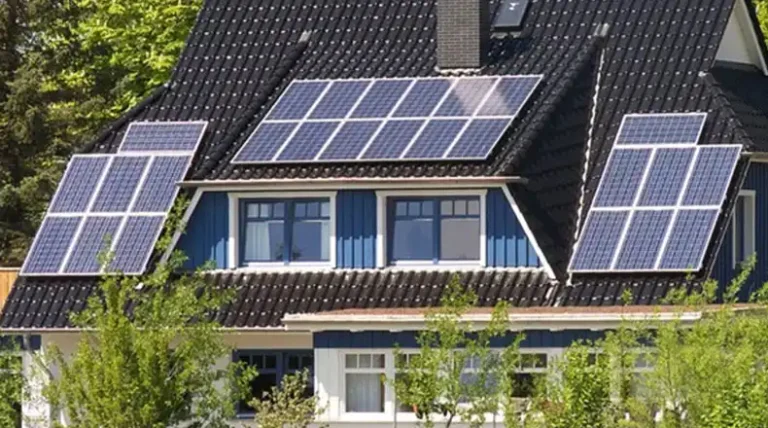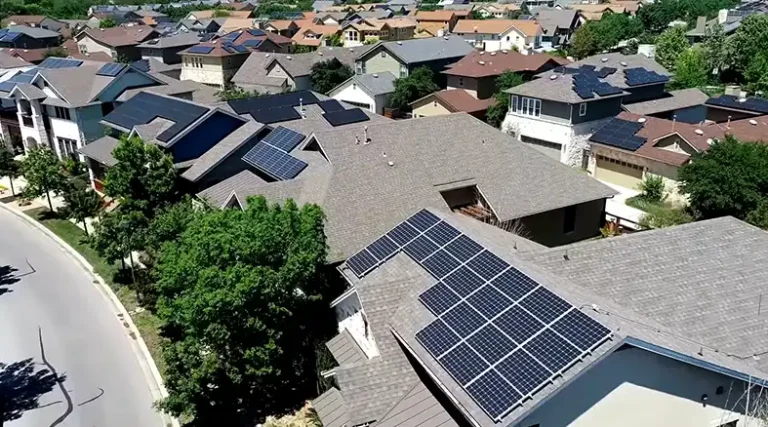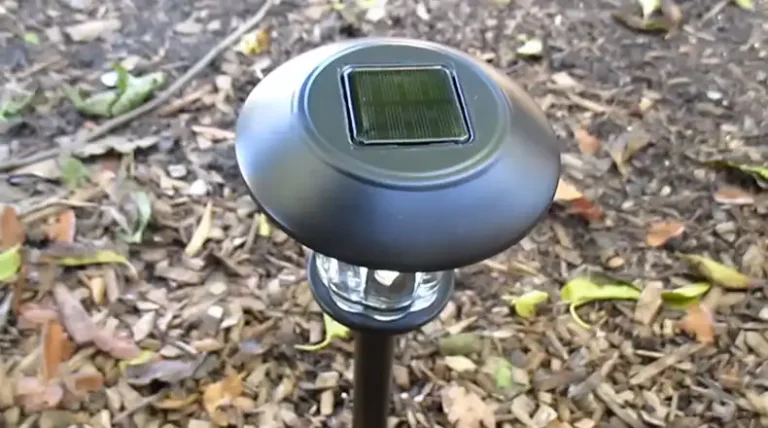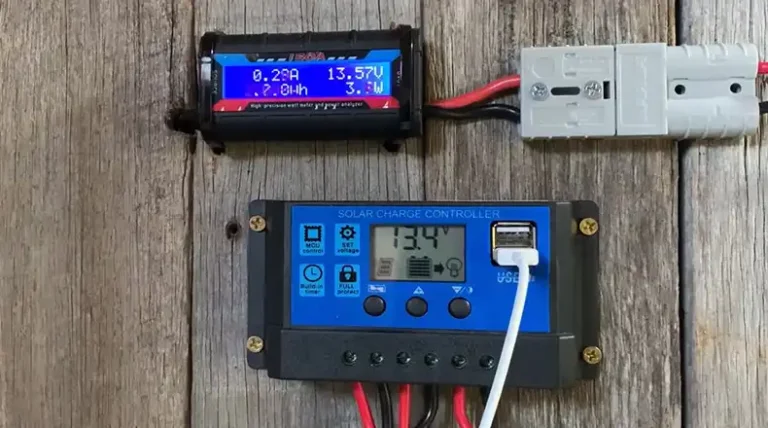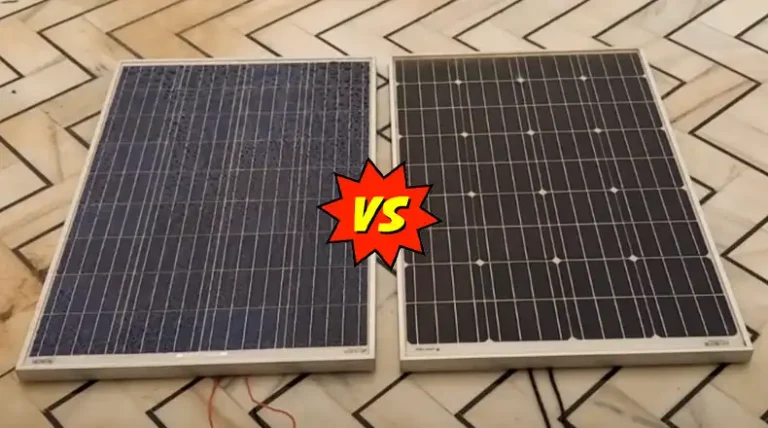How Long to Charge a 12V Battery with a 100 Watt Solar Panel | Calculate Easily
In today’s eco-conscious era, many folks are switching to green energy solutions, with solar panels leading the parade. However, diving into the solar realm brings its set of challenges, especially when it boils down to practical applications, such as understanding charging durations. How long does it take to charge a 12V battery with a 100-watt solar panel?
Well, it depends on various factors including sunlight intensity, battery capacity, and efficiency losses.
But don’t just settle for the short version. Join us as we unpack this electrifying question, ensuring you’re fully charged with knowledge by the end. Whether you’re a solar newbie or just brushing up, you’ll find this article enlightening!
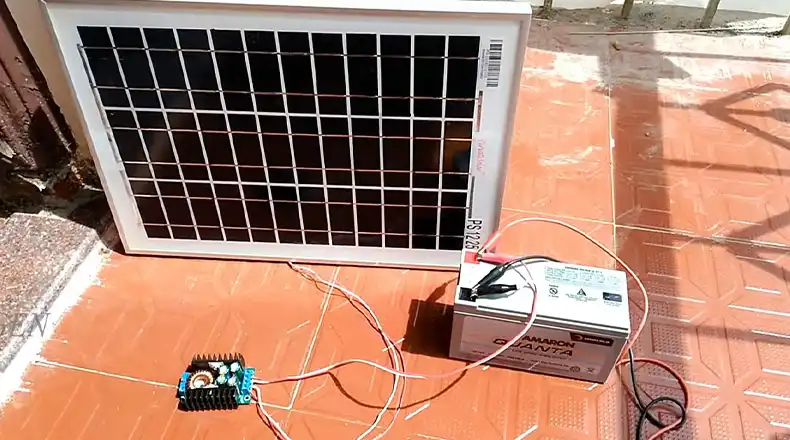
Calculating the Charging Time of a 12V Battery with a 100-Watt Solar Panel
Calculating the charging time of a 12V battery with a 100-watt solar panel isn’t just about the raw numbers on your battery and panel specifications. Real-world factors play a crucial role. However, to understand the fundamentals, let’s start with a basic formula, and then factor in the nuances.
Basic Calculation:
The core formula to determine the charging time is:
Charging Time= Solar Panel Output (W) ÷ Battery Capacity (Wh)
- Battery Capacity (Wh): This is the voltage of the battery multiplied by its capacity in amp-hours (Ah). For a 12V battery with a capacity of 50Ah, the energy capacity is:
12V×50Ah=600Wh
- Solar Panel Output (W): Under ideal conditions, a 100-watt solar panel produces 100 watts of power per hour.
Given these values:
Charging Time=600Wℎ ÷ 100W=6hours
So, under perfect conditions, it would take 6 hours. However, there are more things that can impact the charging time.
Factors to Consider:
However, in real-life scenarios, various elements can extend this time:
Efficiency Losses: As mentioned earlier, there are system losses ranging from 10% to 25% (or even more in some cases). For a moderately efficient system with 20% loss:
- Adjusted Panel Output=100W−(20%of 100W) = 80W
So, the charging time with this output would be:
- Charging Time=600Wℎ ÷ 80W =7.5hours
Sunlight Intensity and Duration: A 100-watt solar panel rarely produces 100 watts continuously from dawn till dusk. Peak production might be for 4-6 hours in many regions. If, on average, the panel produces its peak power for only 5 hours a day, you’ll need more than a single day to fully charge the battery.
Depth of Discharge: If your battery was not fully depleted and only 50% discharged (i.e., 300Wh was used), the time to recharge would be halved, considering all other factors remain constant.
Temperature: As temperature affects efficiency, in very hot conditions, the solar panel might operate below its rated capacity. For instance, at 80% efficiency due to high temperatures, the output might drop to:
- 100W × 80% = 80W
Again, using this output:
- Charging Time = 600Wℎ ÷ 80W =7.5ℎours
Example:
Let’s say you have a 12V battery with a capacity of 40Ah. You’ve used up the battery, and it’s fully depleted. On average, your location gets 5 hours of good sunlight, and the system efficiency (considering all losses) averages to 75% of the solar panel’s rating.
- Battery Capacity:
- 12V × 40Ah = 480Wh
- Solar Panel Output:
- 100W × 75% = 75W
Using the formula:
Charging Time = 480Wℎ ÷ 75W = 6.4hours
This means, in those conditions, it would take roughly 6.4 hours to fully charge the battery.
Before you can determine how long it will take, you have to know the average output of your 100-watt solar panel.
Actual Calculation
Average Output Analysis Of A 100-Watt Solar Panel
100-watt solar panels, while on the smaller end of the solar spectrum, are highly effective for battery charging applications. To assess their efficiency, especially when it comes to charging 12V batteries, we need to deduce their average daily output.
The performance of these panels relies significantly on sunlight exposure, also referred to as solar irradiance. Their productivity peaks during bright sunny hours, declines in less luminous conditions, and drops to zero at nighttime. Furthermore, seasonal changes play a part; panels tend to perform better in summer compared to winter due to extended daylight hours and more direct sun.
To navigate these variables and derive a consistent measure, it’s prudent to work with the annual average output of 100-watt solar panels. Here’s the step-by-step breakdown:
Formula to Calculate Average Output:
100W Solar Panel Daily Output (Wh/Day)=100W×Average Peak Sun Hours×0.75
- 100W: This is the panel’s capacity.
- Peak Sun Hours: This variable denotes the average daily hours when sunlight is strong enough for the panel to operate at peak performance. Although this figure can vary based on geographic and seasonal factors, a general average is about 5 hours (4 hours in cooler climates and up to 6 hours in sunnier regions).
- 0.75 Factor: Accounting for approximately 25% of system losses due to inefficiencies, which is a common industry standard.
Using the given average of 5 peak sun hours, the equation becomes:
100W Solar Output (Wh/Day)=100W×5h×0.75=375Wh/Day
Thus, a 100-watt solar panel, on an average day, will produce 375 Wh of electricity. This equates to 31.25 Wh when broken down hourly.
Charging 12V Batteries Using 100-watt Solar Panel
Having established that a 100-watt solar panel produces an average of 31.25 Wh every hour, we can deduce the charging time for any 12V battery.
Converting Ampere-Hours to Watt-Hours: The capacity of batteries is often given in ampere-hours (Ah). To calculate the energy stored in the battery, we need to convert Ah to watt-hours (Wh). The formula for this conversion is:
Wh=Ah×V
Where V = 12 volts for our examples.
Example Calculations:
- 50 Ah 12V Battery:
- Energy=50 Ah×12 V=600 Wh
- Charging Time=600 Wh ÷ 31.25 Wh/hour = 19.2 hours
Thus, it takes approximately 19.2 hours to charge a 50 Ah 12V battery using a 100-watt solar panel.
- 120 Ah 12V Battery:
- Energy=120 Ah×12 V=1440 Wh
- Charging Time=1440 Wh ÷ 31.25 Wh/hour = 46.08 hours
For a 120 Ah 12V battery, the charging time is approximately 46.08 hours, or slightly more than two days, with a 100-watt solar panel.
Charging Times Table for 12V Batteries Using 100-Watt Solar Panel:
| Battery Capacity (Ah) | Energy (Wh) | Charging Time (hours) |
| 1 | 12 | 0.384 |
| 10 | 120 | 3.84 |
| 20 | 240 | 7.68 |
| 30 | 360 | 11.52 |
| 40 | 480 | 15.36 |
| 50 | 600 | 19.2 |
| 60 | 720 | 23.04 |
| 70 | 840 | 26.88 |
| 80 | 960 | 30.72 |
| 90 | 1080 | 34.56 |
| 100 | 1200 | 38.4 |
| 110 | 1320 | 42.24 |
| 120 | 1440 | 46.08 |
| 130 | 1560 | 49.92 |
| 140 | 1680 | 53.76 |
| 150 | 1800 | 57.6 |
| 160 | 1920 | 61.44 |
| 170 | 2040 | 65.28 |
| 180 | 2160 | 69.12 |
| 190 | 2280 | 72.96 |
| 200 | 2400 | 76.8 |
This table provides a quick reference for users to determine how long it would take to charge their 12V batteries using a 100-watt solar panel.
Factors Affecting Charging Time of a 12V Battery with a 100W Solar Panel
Before we calculate the charging time, it is essential to understand the variables affecting the charging time.
Charging a 12V battery with a 100-watt solar panel isn’t as straightforward as plugging in a device to a wall outlet. Several factors influence the charging duration. Let’s delve into the key determinants that can influence how long it takes to charge that battery:
1. Sunlight Intensity and Duration:
- Direct Sunlight: The amount of sunlight directly striking the solar panel plays a pivotal role. More intense sunlight means the panel can produce power closer to its maximum rating.
- Duration: It’s not just about intensity; the length of time the panel receives sunlight is equally critical. A panel might get strong sunlight for only 4 hours in some regions, while in others, it might be exposed for over 6 hours.
- Angle and Orientation: The angle at which sunlight hits the panel can affect its efficiency. Ideally, panels should be oriented to face the sun directly.
2. Battery Capacity and Depth of Discharge:
- Capacity: A battery with a larger capacity (measured in amp-hours, or Ah) will naturally take longer to charge than one with a smaller capacity.
- Depth of Discharge: If a battery is only partially discharged, it will take less time to fully charge than if it’s nearly empty.
3. Efficiency Losses and Power Conversion:
- Panel Efficiency: No solar panel converts 100% of the sunlight it receives into electricity. On average, many panels operate at 15-20% efficiency.
- System Losses: Transferring the generated power to the battery involves some losses, especially in the cables and connections.
- Charge Controller Efficiency: The charge controller, which ensures the battery doesn’t overcharge and regulates the power flow, has its own efficiency rating. A more efficient controller will deliver more of the panel’s power to the battery.
4. Temperature:
- Panel Temperature: Solar panels tend to lose efficiency as they get hotter. Therefore, on an extremely hot day, a panel might not perform as well as on a cooler, sunny day.
- Battery Temperature: Batteries, too, have optimal operating temperatures. If a battery becomes too hot or too cold, its ability to accept a charge might decrease.
5. Battery Age and Condition:
- Health of the Battery: Over time, batteries lose their ability to hold a full charge. An older battery might not charge to its original capacity, and thus might seem to charge “faster.”
- Maintenance: Some batteries, especially lead-acid types, require regular maintenance. If neglected, they might not charge efficiently.
6. Miscellaneous System Losses:
- Cabling: The thickness and length of the cables can cause energy loss. Thicker (or shorter) cables generally reduce these losses.
- Dirt and Debris: If the solar panel is dirty or covered with leaves, bird droppings, or other debris, it can’t absorb sunlight efficiently, leading to longer charging times.
Understanding these factors is the key if you’re aiming to maximize the efficiency of their solar charging setup. While some factors, like sunlight duration, might be out of your control, you can manage others by maintaining and using the right equipment to ensure the shortest charging time possible.
Tips for Efficient Charging
- Optimal Panel Placement: Ensure the panel is angled towards the sun and free from obstructions or shade.
- Use a Quality Charge Controller: This ensures efficient power conversion and protects the battery from overcharging.
- Monitor Battery Health: A battery in good condition will charge more efficiently than an aging or damaged one.
Conclusion
While basic math provides a rough estimate, real-world conditions require some adjustments. By understanding the various factors and ensuring optimal setup and maintenance, you can effectively harness the sun’s power to charge your 12V battery. Happy solar charging!
People Also Asked
Q: Can I charge my 12V battery on a cloudy day?
A: Yes, but it will be less efficient. A solar panel’s output decreases on cloudy days.
Q: Do I need a charge controller with my solar panel?
A: Absolutely. A charge controller ensures the battery doesn’t overcharge and can improve charging efficiency.
Q: How do I know if my battery is fully charged?
A: Most charge controllers have indicators. Additionally, measuring the battery’s voltage can give an indication of its charge level.
Q: Can I use the battery while it’s charging?
A: Yes, but it will increase the overall charging time as some of the power generated will be used by the connected devices.

